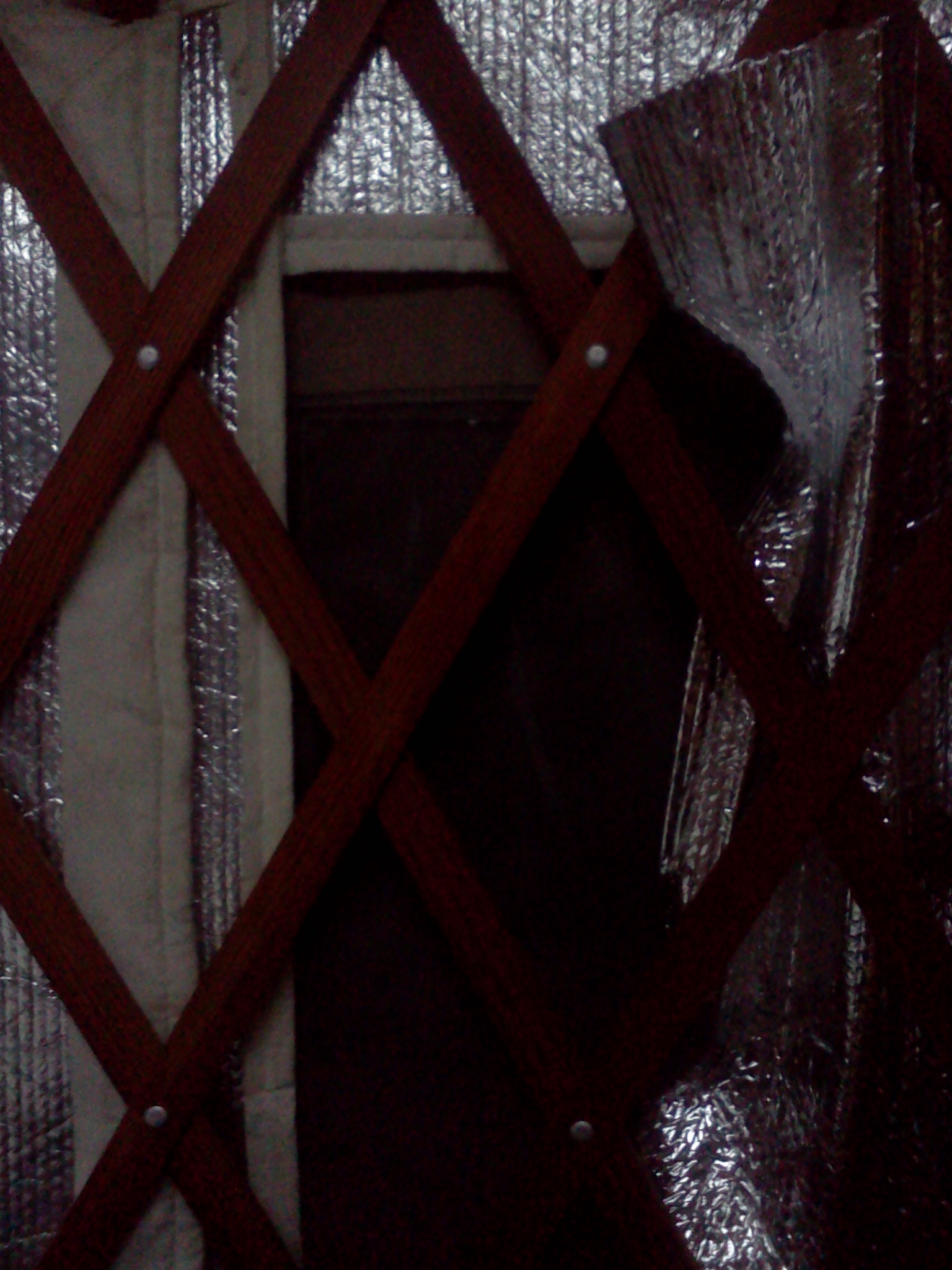 As the temperature drops I’ve been slowly cranking my heater up notch by notch. It’s been a wet and chilly week with temperatures in the high 30s to low 50s. Portland has a mild climate and I know it won’t get much colder, but I don’t like that I’m already at the 6th of 10 notches on my Envi Heater. I’d like to wait till winter really hits to have to crank it up again until we hit the coldest days. Weatherizing the yurt is a matter of both saving energy and being more comfortable.
As the temperature drops I’ve been slowly cranking my heater up notch by notch. It’s been a wet and chilly week with temperatures in the high 30s to low 50s. Portland has a mild climate and I know it won’t get much colder, but I don’t like that I’m already at the 6th of 10 notches on my Envi Heater. I’d like to wait till winter really hits to have to crank it up again until we hit the coldest days. Weatherizing the yurt is a matter of both saving energy and being more comfortable.
My lessons in building science have taught me that heat transfer happens in 3 ways: conduction, convection, and radiation. In really simple terms, I think of it this way: conductive heat losses occur through the solid, opaque materials of the building’s envelope, radiant heat losses occur through the transparent materials like the oculus and the windows, and convective heat losses occur through the gaps between materials.
I decided to tackle conductive heat losses first. Heat travels from warm to cold so the heat that my Envi Heater produces will transfer through the solid materials that make up the yurt’s envelope: the wooden door, the plywood floor, the vinyl tent. The yurt has virtually no insulation so the conductive heat loss potential is high. It’s a glorified tent and the only insulation is a bubble wrap material that lines the walls, creating lots of little air pockets which slows heat transfer. The floor isn't insulated at all. The bubble wrap that lines the walls provides some insulation as do the rugs on the floor. But it’s not much. There’s really not a practical way to add insulation to the walls because of their curve. It would be possible to insulate the floor and the ceiling, too, but since I don’t own the yurt I don’t have much incentive to invest in comprehensive insulation. Instead I will tackle weatherizing on the other two fronts. This is a very small space, so even if I don’t have much insulation to prevent conductive heat transfer I can still take steps to reduce radiant and convective heat transfer.
Radiant heat loss occurs when something warm gives off heat to something cold. It relies on direct lines of sight. If you can see a cold object you’re giving up heat to it. This often occurs through windows. I’m sure you’ve had the experience of sitting on a stone bench or standing next to a window on a cold day and feeling like the heat is being sucked out of you. It actually is! So closing the drapes at night really can help keep the house warmer. Putting something between you and the stone bench can help your tush not go numb from cold. I had already closed up the yurt’s windows a few weeks ago, thereby reducing my radiant losses. But I could tell that windows were a weak spot in my thermal envelope. There was no insulation here to prevent conductive losses. So I bought a roll of bubble wrap insulation for $20 and cut covers for the two windows to prevent conductive heat transfer through the vinyl window cover and the fabric of the tent flap that covers the windows. Now that the windows are closed, my only natural light comes through the oculus so I’ve been hesitant to create a cover for it. However, I realize that it’s the spot where heat is most likely to radiate to the sky. When it gets really cold, I’ll need to address this and I’ll tackle my remaining radiant heat losses then.
In the meantime, I turned my attention to convective heat losses. This is where air sealing comes in. I’ve noticed that there are spots where I can feel the cold air at the seams. The yurt has seams where the floor meets the walls, where the walls meet the roof, and around the windows and the door. I plan to seal these seams so that warm air has a harder time slipping through the cracks. However, today I tackled the obvious leaks. First, I realized I’d left the oculus open just a crack, so I decided to close it up all the way on these cold days. I can always open it whenever I need to air the yurt out, but keeping it closed on cold days (and especially cold nights) will help keep the yurt warmer. I also put rubber weather stripping around the doorframe so that when the door is closed I can no longer see daylight around the perimeter. I need to be sure to pull the door closed tightly now, but it does seem to be helping.
This evening it’s much warmer in the yurt, so I’ve turned the heater back down to the second notch. I’m not sure if it’s actually warmer outside tonight or if these little weatherization projects are already paying off, but it’s very cozy in here tonight!




